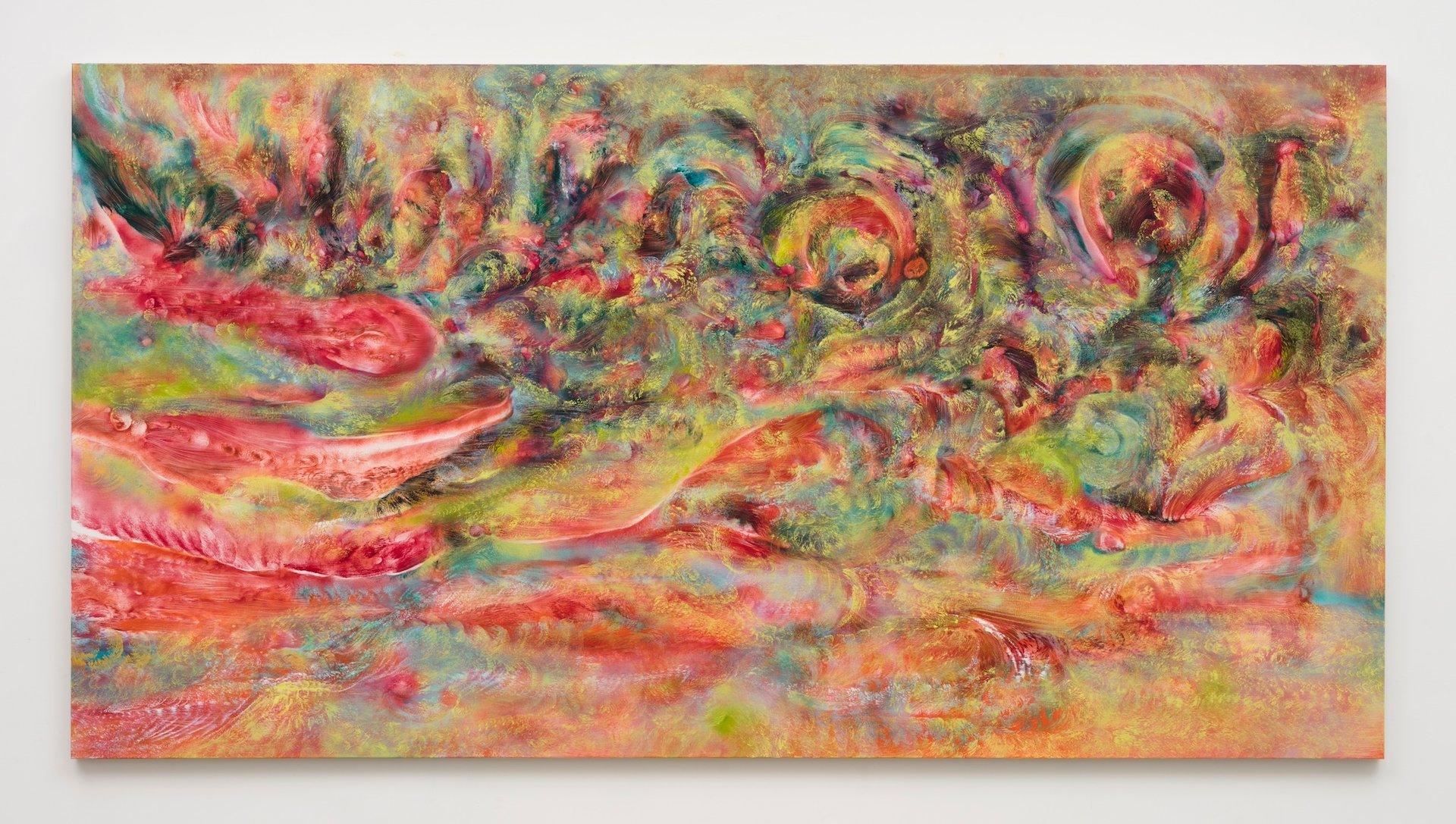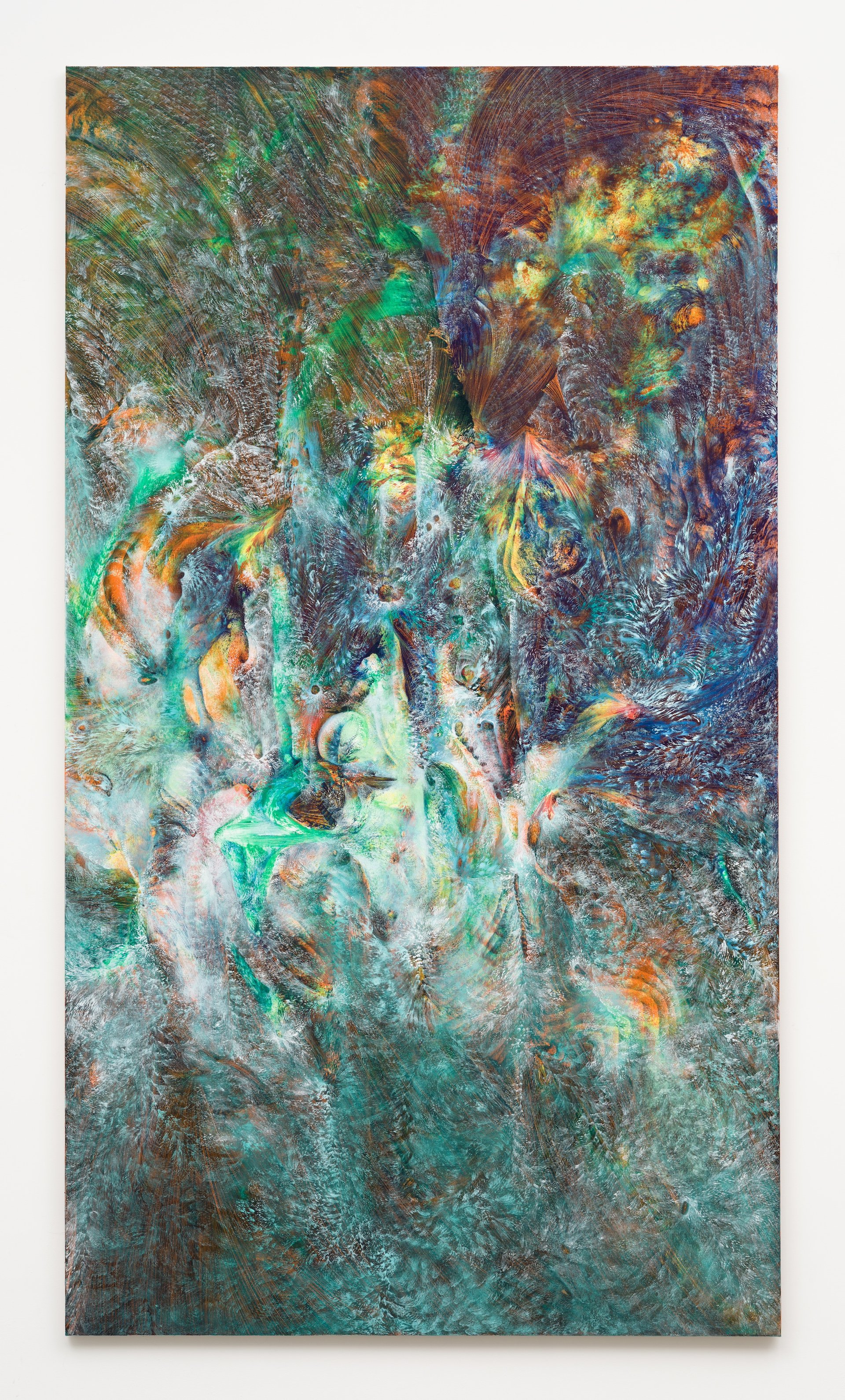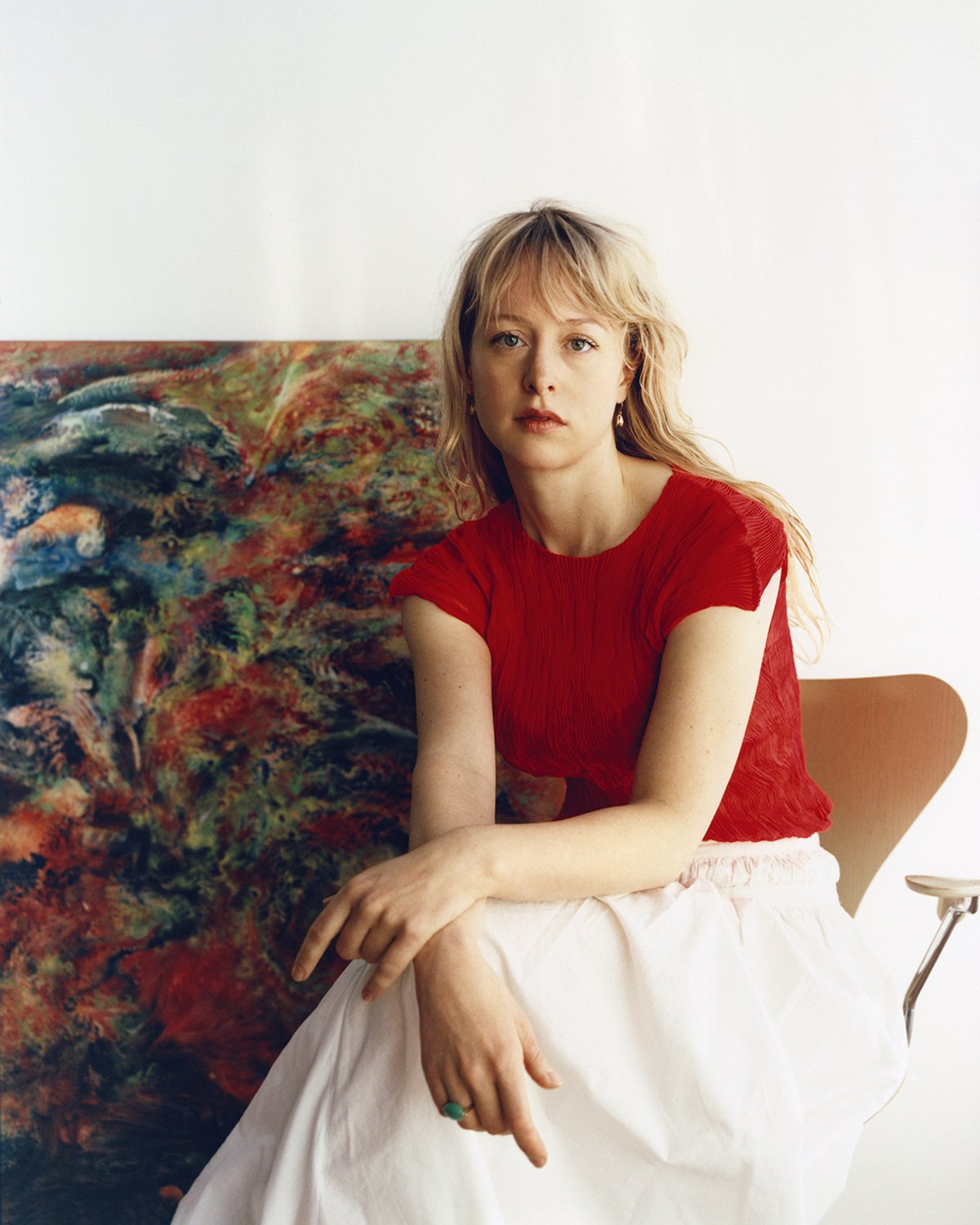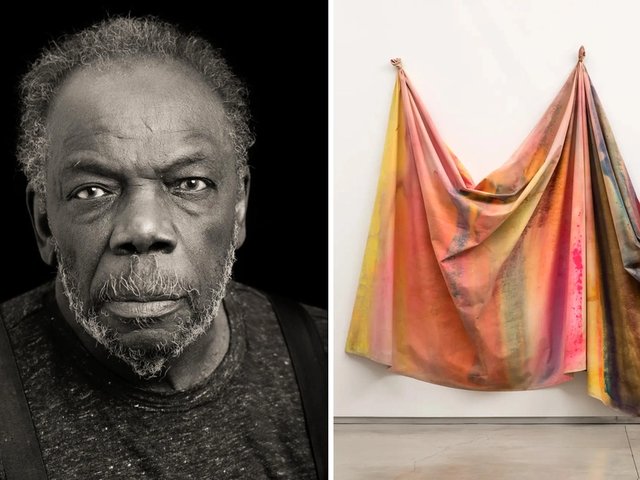Some artists prefer to keep home and work separate. Not Lucy Bull. In-progress paintings are everywhere in the 34-year-old’s lofted, two-storey home in East Los Angeles: on the walls of her street-level studio, yes, but also in the kitchen, on a couch, even beside her bed one floor above. The artist’s painstaking process makes working on several pieces at once a prudent use of time, but it is more than that. Bull likes to live with her paintings, so that she can constantly flit between them with fresh eyes. Some she labours over for months; others come “fast and weird”, she says. “They’re like the good shits,” Bull jokes of the latter group.
The rising star is prone to charming, off-kilter comments at the best of times, but all bets are off when she is racing against a deadline. Bull is speaking with The Art Newspaper in late March amid an intense push to wrap a series of paintings planned for Ash Tree, a solo show at David Kordansky Gallery in Los Angeles (until 15 June). The way the artist works makes it difficult to tell how close she might be to finishing, but one thing is clear: she is in the thick of it.
Building chaos
“It’s always like I’m building chaos, then I have to find my way back,” Bull says of her process—an iterative series of steps through which she repeatedly adds and removes layers of paint until they alchemise into something illusory and greater than the sum of their parts. Only occasionally does she use brushes the conventional way, preferring to dab, stab, twist and scrape her paint instead. For example, one early breakthrough came when she used one brush “so much that the bristles fell out, and eventually I started to etch with the metal part”.

Lucy Bull, 22:31, 2023 Photo: Jeff McLane, courtesy of David Kordansky Gallery
But her pell-mell technique belies its slow, hypnotic effects. In Bull’s art, gestural marks and acid-washed whorls of colour overlap and blend, seemingly in real time, crystallising into recognisability one second before dissolving into kaleidoscopic psychedelia the next. In this stew is a healthy portion of classic Surrealism (the landscapes of Max Ernst in particular) and a pinch of second-generation Abstract Expressionism (Helen Frankenthaler and Joan Mitchell spring to mind). Bull’s paintings also recall Op art, though not necessarily the kind pioneered in the 1960s by Bridget Riley and Victor Vasarely—more like the computer-generated Magic Eye images that briefly dominated children’s books, doctors’ offices and one memorable episode of Seinfeld in the 1990s.
What she strives for most in her work, however, is for it to be both self-contained and open-ended, so that no specialised knowledge is required to access its world. “Ultimately I’m trying to get to the point where the painting has multiple entry points,” Bull says. “It’s when I have the feeling that my understanding will shift and morph over time that I know it’s finished.”
‘Visionary’ vs. speculators
The forthcoming May exhibition will be Bull’s third solo with Kordansky. She joined the gallery in 2021, two years after the dealer discovered her work through a mutual friend’s Instagram. “He immediately asked [my friend] who it was. He was like, ‘She’s visionary,’” Bull says in an affectionate, half-hearted impression of Kordansky that is promptly undone with deadpan self-deprecation: “He says that about a lot of people, though.”
The New York-born artist last mounted a solo show in her adopted hometown of Los Angeles in 2021, making this spring’s return that much more meaningful. For Bull, much has come about since then: a new home and studio, a pair of solo shows at the Shanghai private institutions the Long Museum and Pond Society, and a vertiginous—maybe even alarming—uptick in the market demand for her art. Her career has, without a doubt, levelled up, but it has not always felt like a triumph.
A high percentage of collectors are buying her work and then selling it right away
One of Bull’s works first appeared at auction in 2022, and by the end of the following year, 29 examples had been sold under the hammer in New York, Hong Kong and London for a grand total of more than $11.3m (with fees), according to data from the art market research firm ArtTactic. Three of her works made more than $1m (with fees) over those two years, including the 2020 painting Flash Chamber, which went for a record $1.7m in last October’s contemporary evening auction at Sotheby’s in Hong Kong. That record was surpassed earlier this week at Sotheby's, when Bull's fiery 2020 painting 16:10 sold for a hammer price of $1.45m ($1.8m with fees), more than doubling its high estimate. “That’s a high percentage of collectors who are buying her work and then selling it right away,” says Amanda Schmitt, a New York-based art adviser.
Back to abstraction
For years, the painting market was focused on identity-obsessed figuration, but what we are starting to see now, Schmitt says, is a ricochet back to abstraction. Driving this trend are young women painters—people like Bull, Jadé Fadojutimi and Lauren Quin—who are breathing new life into an old form. Their success is encouraging, but speculators loom too, complicating these artists’ careers just as they get what they need to bloom.

Lucy Bull, Permission, 2021 Photo: Jeff McLane, courtesy of David Kordansky Gallery
“In the beginning, it was like, ‘Woah, this is cool. I can afford to make more paintings. I can afford not to work a side job,’” Bull says, referring to how early sales of her work enabled her to end her years-long stint waitressing at Speranza, a popular haunt for the Los Angeles art world. “But a lot of those collectors—all of them, in the beginning—flipped.” Partitioning life in the studio from the more cut-throat aspects of the trade is not easy for a young artist, she admits. “You have to actively fight this feeling that you’re just making a commodity.”
Separating ‘the magic’
Kordansky says that every one of Bull’s paintings that has appeared on the secondary market was created and sold before she joined his roster. “The work was made readily available at very inexpensive price points, then used to profiteer and make a lot of money. But her practice is bigger than this speculative market. This is where we have to separate the magic that she’s conjuring from the behaviour of bad actors.”
Kordansky declined to comment on the price range of the works in Bull’s forthcoming solo show. Sources with direct knowledge say the gallery listed some of her then-new paintings from $55,000 to $65,000 at major art fairs in 2021 and 2022. For comparison, ArtTactic’s data finds that Bull’s average sale prices at auction in 2022 and 2023 were $422,000 and more than $365,000, respectively.
To offset this unbridled activity in the secondary market, the gallery is “being extremely mindful” about who it is placing Bull’s paintings with, Kordansky says. “The majority of people who are buying Lucy’s work from my gallery are buying it because they see in it what I see in it,” he says before adding, unprompted: “She always jokes, like, ‘Ah, Dave, you think all your artists are visionaries.’ But I’m really serious about it. She’s literally invented a language of abstraction.”




